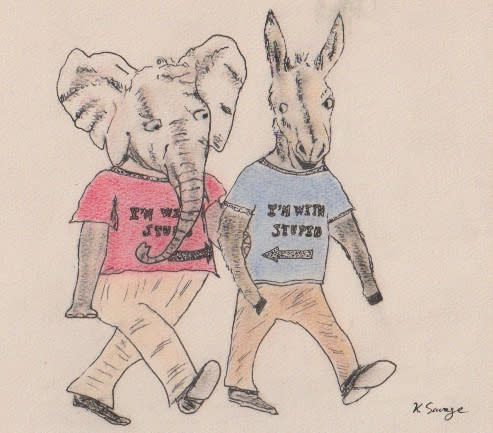Yes, Washington is in fact more partisan now

Washington has never been more partisan, right? Or is that common lament simply a trick of nostalgia? A look at the numbers reveals that the problem is not, it turns out, all in our heads: over the last four decades, Congressional polarization has steadily increased.
Since 1947, Americans for Democratic Action, a liberal advocacy group, has tracked the political positions of each Senate and House member, scoring how they voted each year on 20 key bills covering a variety of social and economic issues. (Many groups from across the political spectrum calculate lawmakers' dedication to various ideologies and causes. The Signal is merely using this group's data because it is collected over many years and is based on the controversial votes that reveal the fault lines in the House and Senate.)
In the graph below, the colored bands indicate where the middle 50% of each party ranks on the ADA's scale. A narrower band means the heart of the party usually votes in tandem; a wider band shows that lawmakers feel a certain license to vote against the party on more occasions.
As you can see, the centers of the two parties have not come close to overlapping since Ronald Reagan was president. Even if the general deviation from the party line--the width of the colored band--resembled those looser times, the overall adherence to party doctrine would prevent any overlap.
Sharad Goel is a member of the microeconomics and social systems group at Yahoo! Research. He blogs at MessyMatters.com. Illustration by Kelly Savage.
Other popular Yahoo! News stories:
• Politicians never 'lie'
• Romney win captivates Twitter—for 10 minutes
• Mitt Romney's February to-do list
Want more? Visit The Signal blog or connect with us on Facebook and follow us on Twitter.


